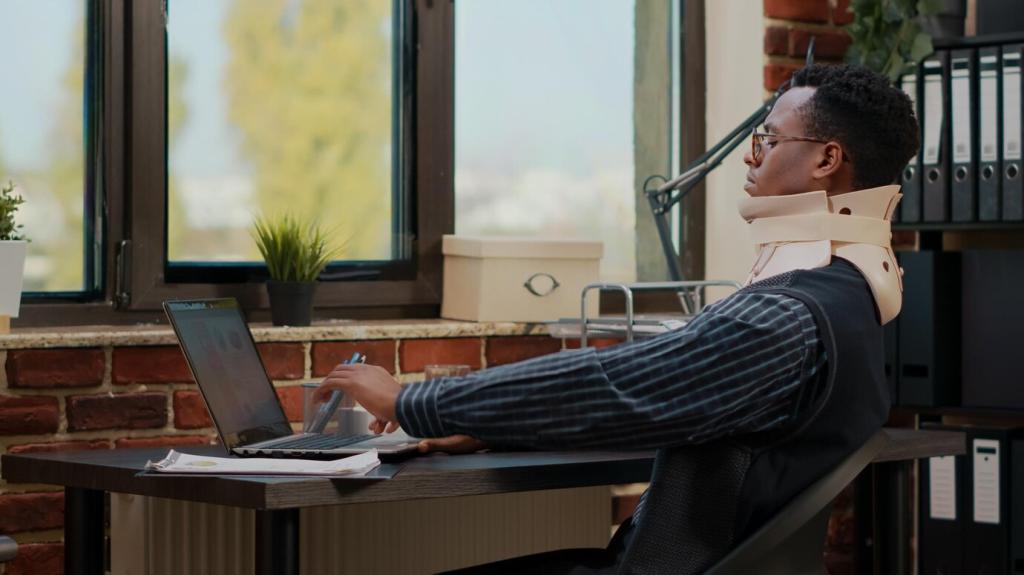Boosting Work Efficiency with Ergonomically Designed Furniture
In today’s fast-paced work environment, maximizing productivity and maintaining employee well-being are crucial factors for business success. One powerful yet often overlooked method for enhancing workplace efficiency is the use of ergonomically designed furniture. By adapting workspaces to fit the needs of the human body, organizations can improve comfort, reduce fatigue, and promote healthier work habits, all of which contribute to greater overall output. This page explores how thoughtful ergonomic furniture choices can profoundly impact both individual performance and organizational efficiency.

The Science Behind Ergonomic Design
A human-centered approach means designing furniture and workspaces that cater to the natural postures and behaviors of people. This philosophy recognizes that everyone has unique needs, such as differences in height, limb length, and preferred sitting or standing positions. Ergonomic furniture accommodates these variances, providing adjustable features so every individual can find their ideal fit. With desks, chairs, and accessories that adapt to users, employees are less likely to develop repetitive strain injuries or chronic discomfort. This health-oriented framework not only keeps staff comfortable but also allows them to focus more intensely and operate at a higher level, directly impacting work efficiency.
Proper posture is fundamental to physical and cognitive performance at work. Ergonomically designed chairs and desks help maintain the spine’s natural curve, ensuring that the body is supported in a way that minimizes muscle fatigue and joint stress. When workers can sit or stand with good posture, they experience fewer distractions from bodily discomfort and can concentrate more effectively on their tasks. Over time, reinforcing healthy posture through ergonomic furniture leads to fewer workdays lost to injury, improved attentiveness, and higher productivity, making it an essential component for any organization aiming to boost efficiency.
Comfort goes beyond physical relief; it significantly affects mental acuity and work quality. When employees are free from aches and pains, their brains can devote more energy to problem-solving, creativity, and effective communication. Ergonomically designed furniture ensures sustained comfort, which reduces the likelihood of mental fatigue, burnout, and errors caused by distraction. As cognitive performance rises alongside physical wellness, organizations benefit from sharper decision-making and more innovative thinking, reinforcing the bottom line and making ergonomic investment a wise strategic move.

Reducing Workplace Fatigue and Discomfort
Supporting Proper Movement Throughout the Day
A sedentary lifestyle, often exacerbated by traditional office setups, can lead to muscle stiffness and systemic fatigue. Ergonomic furniture such as sit-stand desks and dynamically adjustable chairs encourages movement and variation in posture, which keeps muscles active and promotes better blood flow. This active approach to working not only lessens muscular discomfort but also helps manage energy levels. By preventing the monotony of static sitting or standing, employees remain more engaged and energized, resulting in a noticeable improvement in daily efficiency and a stronger drive to accomplish tasks.
Minimizing Repetitive Strain Injuries
Repetitive strain injuries from poorly designed workspaces can sideline even the most dedicated employees. Ergonomically designed chairs, keyboard trays, and monitor arms create an environment where wrists, shoulders, and neck are properly aligned, minimizing the risk of strain. Adjustable features allow workers to set up their areas to fit their natural reach and line of sight, eliminating unnecessary stress on tendons and joints. With fewer injuries and associated downtime, teams can maintain consistent momentum, and employees enjoy longer, healthier careers, contributing to sustained productivity growth.
Combating Musculoskeletal Disorders
Musculoskeletal disorders (MSDs) pose a significant threat to workplace efficiency due to their long recovery times and the discomfort they cause. Ergonomic furniture plays a preventive role, supporting the body’s most vulnerable areas, including the lower back and upper limbs. By offering lumbar support, contoured seats, and height-adjustable components, ergonomic office solutions can drastically cut the incidence of MSDs. With healthier employees facing lower risks of work-related injury, organizations benefit from less absenteeism and a more robust, reliable workforce focused on shared goals.

Distractions, whether from discomfort or cluttered environments, can significantly disrupt workflow and slow progress. Ergonomically designed desks and accessories are tailored to promote neatness and accessibility, ensuring work essentials are within easy reach without causing physical strain. This setup minimizes unnecessary movement, allowing employees to stay absorbed in their work for longer periods. By cultivating distraction-free zones, employers empower staff to immerse themselves in complex tasks or creative projects, yielding higher-quality results with reduced error rates.

Efficient workflows depend on seamlessly transitioning between different activities. Ergonomically arranged workstations are optimized for the individual, grouping tools and resources in a logical, easily accessible manner. Monitor stands, adjustable arms, and organized cable management eliminate unnecessary delays between tasks. This strategic organization saves time, reduces cognitive friction, and supports multitasking, so employees can move from one priority to another with minimal interruption. As a result, organizations experience smoother operations and faster project completion rates, driving overall productivity.

Sustained concentration is critical for tackling demanding assignments and meeting deadlines. Physical discomfort or awkward postures easily disrupt extended periods of focus, leading to costly mental lapses. Ergonomically designed seating and desks offer support to keep users comfortable, so they can remain engaged for longer stretches of time. The right environment alleviates minor aches that might otherwise draw attention away from work, ensuring deep concentration is maintained. This leads to a notable increase in project accuracy, creativity, and the ability to meet—and exceed—performance expectations.
